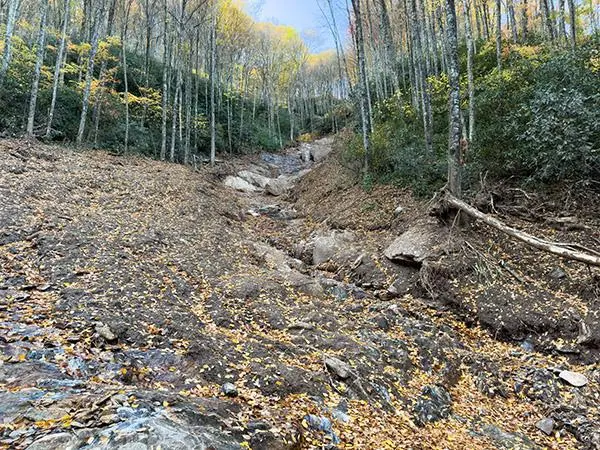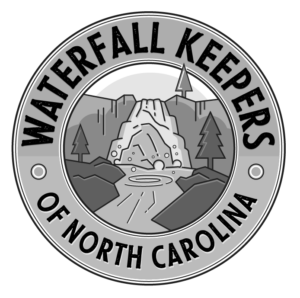Helene and Thoughts From the Executive Director
December 5, 2024

It has been two months since Tropical Storm Helene blew through western North Carolina. Given the wrath it caused, it just doesn’t seem right calling it a “storm.” Cataclysm, or even apocalypse, comes to mind.
I’ve spent most of my adult life learning about western North Carolina and the events that shaped it. One event that always comes up is the Great Flood of 1916, the flood that decimated most of western North Carolina. It’s the one that washed out Toxaway Dam and left Toxaway Falls with the barren rock that we still see today.
I hated reading about the devastation this flood caused, but I took solace in the “fact” that I would never have to witness such an event in my lifetime, nor would my kids or grandkids. After all, events like that don’t happen but once every 500 years, if they happen at all.
Of course, nature doesn’t follow the conventions we apply so neatly to explain things. I wonder if a storm of Helene’s magnitude has happened in the past 1,000 years, and I surely hope one doesn’t happen in the next millennium. But now, unlike how I responded to reading about the Great Flood of 1916, I’ll go forward with the thought that another Helene could happen next month.
I’ve been talking with so many people about how Helene has impacted our waterfalls. The good news is that most of the falls in the southwestern portions of the state (Cashiers, Sylva, and Cherokee regions and southwestward) suffered minimal damage compared to areas north. They did have damage, but more on par with what we’re used to from a major storm.
I have received few reports about waterfalls north of I-40 up to the Virginia line, mostly because there is so much road damage that people can’t get out to explore, and until very recently, the Grandfather and Appalachian Districts of Pisgah NF were totally shut down. I’m very concerned about what we’ll find in these areas.
As far as the waterfalls in the Transylvania, Haywood, Jackson, and Henderson Counties region, the reports are mixed. There was quite a bit of overall damage due to fallen trees and landslides, but many of the waterfalls came through unscathed. In fact, some of the falls look better now after previously fallen trees were washed away.
The biggest issue with regard to waterfalling is fallen trees on the access trails and on some of the falls themselves. There are also numerous landslides of varying intensity that also affect the access trails.
Unfortunately, some of the waterfall damage caused by Helene, such as landslide scars, will remain during the lifetime of everyone reading this. And most of the fallen trees in the forest will lie as they are. All land agencies, state or federal, operate much the same with regards to managing their trail system. Official trails—those that have names and trail numbers—receive attention, but most other trails receive none. Agencies simply will not send crews to remove trees from most non-sanctioned trails and they will not authorize organizations such as ours to do so, either.
Of course, we can and will continue our cleanup work and trail reporting. Our first post-Helene organized waterfall cleanup is Saturday, December 7 at McGalliard Falls in Valdese and we are planning for regular organized cleanups afterward.
Thanks to everyone who is with us on this journey of waterfall love!
Kevin Adams
Executive Director

